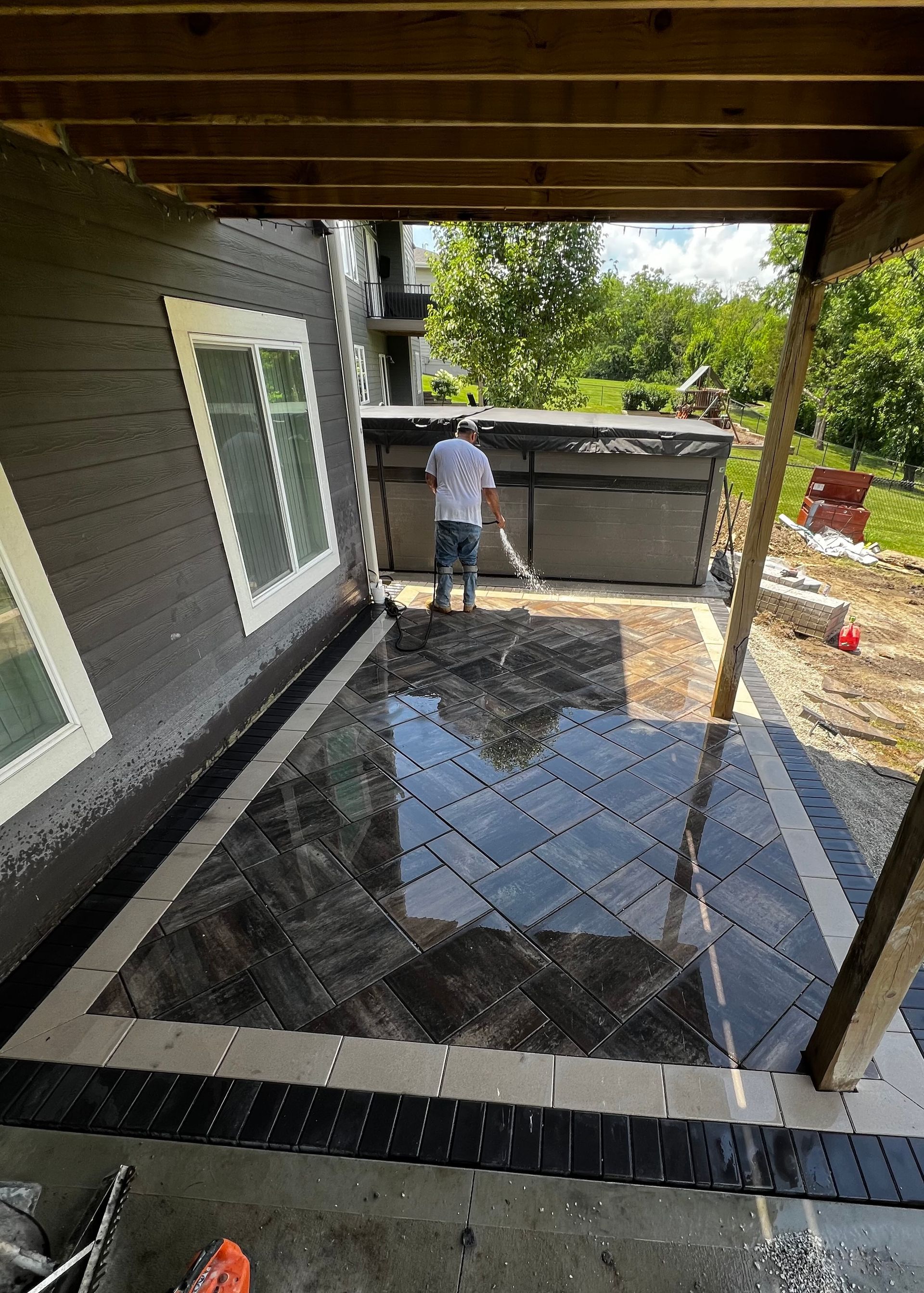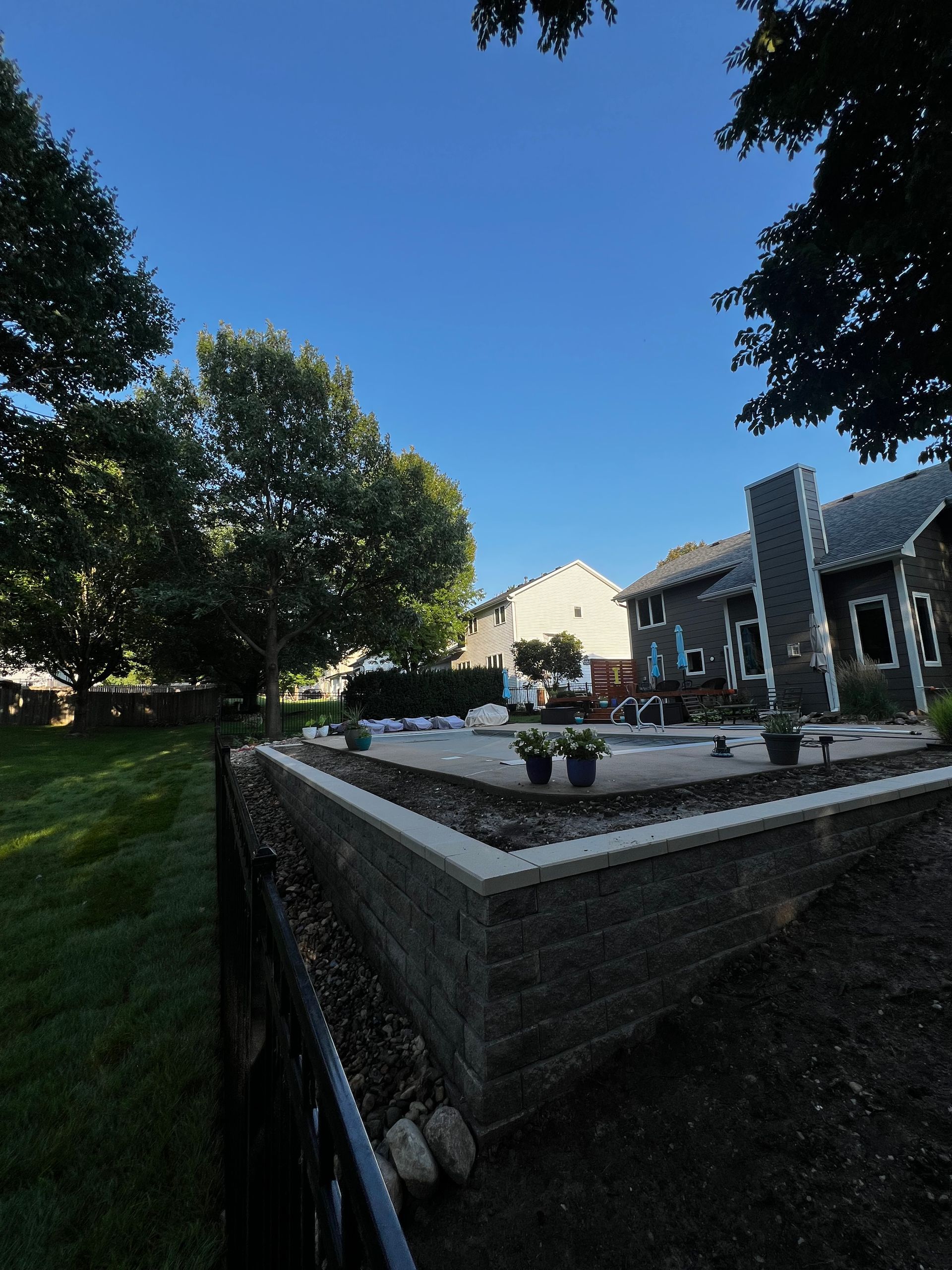Native Iowa Landscaping: 15 Low-Maintenance Plants
Native Iowa Landscaping: 15 Low-Maintenance Plants That Thrive
If you’re looking to create a beautiful yard in Iowa that requires less hassle, less watering, less fuss, but still delivers real visual payoff, then planting with native Iowa species is a smart move. At Larkin Landscape & Design we believe in leveraging the power of native Iowa plants to build resilient, sustainable, and low-maintenance landscapes. In this post, we’ll dive into the “why” behind native landscaping in Iowa, then talk about 15 great native plants (mostly prairie perennials) that thrive in our region and fit perfectly into a low-maintenance landscape design.

Why Native Iowa Landscaping Makes Sense
By choosing Iowa native plants, you’re doing more than just picking pretty flowers. These plants are already adapted to our soil, our weather swings, our native bees and butterflies. According to the publication Introduction to Iowa Native Prairie Plants, native species are “well-adapted to local conditions, once established they require little or no irrigation.”
Here’s the real-world payoff:
● They save you time and effort. A landscape built on native plants tends to settle into itself and needs less intervention.
● They help the environment. Native plants support local pollinators, birds, and wildlife, while also helping with soil stabilization and storm-water runoff.
● They look and feel right in Iowa. Using prairie perennials, grasses and native forbs gives your yard a natural, place-based identity rather than something imported that fights the local climate.
When we say “low-maintenance,” we don’t mean “no care at all,” but rather “less reactive care”. Once established, you’re more in management-mode rather than rescue mode.
How to Approach Your Planting
Before we talk about the list of plants, here are a few quick tips to help you pick and place them wisely in your Iowa yard:
1. Know your sun & soil exposure
Many prairie plants prefer full sun and well-drained soils, others tolerate part-shade or moist spots.
2. Think in layers
Combine taller perennials and grasses with lower ones for visual interest through the seasons.
3. Group for effect
Plant in clumps of three or more plants so they can make a statement rather than appear sparse.
4. Allow for seasonal change
One of the perks of prairie landscaping is that even in winter the dried seed-heads and grasses add texture and interest.
5. Minimal fuss after establishment
It helps them to get settled by heavily watering them the first year, afterward you pull back and let nature do much of the work.
With that, let’s discuss about fifteen native Iowa plants that are tough, beautiful, and excellent for low-maintenance landscapes in Iowa.
15 Iowa Native Plants That Thrive & Require Less Maintenance
Here’s a curated selection of plants that work well in an Iowa native-plant landscape. Each entry includes why it’s a good choice.
1. Echinacea purpurea (Purple Coneflower)
A classic prairie perennial: sturdy, drought-tolerant, and a magnet for butterflies and bees. According to one guide, it’s a “stunning addition of hardy nature” ideal for Iowa.
2. Rudbeckia hirta (Black-eyed Susan)
Bright yellow flowers, long bloom period, tough in our climate. Excellent for full sun and adding cheerful color.
3. Asclepias tuberosa (Butterfly Milkweed)
Low water needs, vibrant orange flowers, and a host plant for monarch butterflies. A smart pick for both beauty and ecology.
4. Monarda fistulosa (Wild Bergamot / Bee Balm)
Lavender to pink blooms, aromatic foliage, attracts pollinators. Soil- and climate-adapted for Iowa.
5. Coreopsis palmata (Prairie Tickseed)
Sunny yellow blooms, clean foliage, and a good fit for mass planting. Listed in Iowa’s recommended native plant lists.
6. Ratibida pinnata (Gray-headed Coneflower)
Similar to coneflower but with taller, thinner stems and interesting seed-heads for fall texture. A prairie classic.
7. Phlox pilosa (Prairie Phlox)
Low to the ground, early bloom, great for the front of beds or edging. A native phlox that supports hummingbirds.
8. Veronicastrum virginicum (Culver’s Root)
Tall spires of white flowers, upright form adds architectural interest. Works in sun to part shade, great for background layers.
9. Liatris pycnostachya (Prairie Blazing Star)
Vertical spikes of magenta blooms, drought-tolerant, and adds strong upright presence in the garden.
10. Solidago canadensis (Canada Goldenrod)
Often overlooked or mistaken as “weedy,” but in a planned native landscape goldenrod brings late-season interest (yellow blooms) and supports pollinators.
11. Schizachyrium scoparium (Little Bluestem)
A native grass that brings texture, movement, and great fall color (rusty bronze tones). Grasses like this are key to a low-maintenance prairie-style bed.
12. Sorghastrum nutans (Indian Grass)
Taller grass, striking seed-heads, good backdrop plant. Requires little maintenance once established.
13. Amorpha canescens (Leadplant)
A leguminous native, silver foliage, stays compact and works for dry, sunny spots — very low input after the first year.
14. Asclepias incarnata (Swamp Milkweed)
If you have moist or part-moist areas in your yard, this native milkweed is a great pick. Hosts monarchs, blooms nicely, and builds a native garden piece without angst.
15. Rosa arkansana (Prairie Rose – Iowa state flower)
Bringing in a shrub form adds seasonal structure. Native roses like this require less fuss than some hybrid shrubs, support native wildlife, and give you a hint of wild prairie charm.
How These Fit a Low-Maintenance Landscape
Drought tolerance & local adaptation
Many of these plants are from prairie ecosystems that developed in Iowa’s soils over thousands of years, so they tolerate heat, wind, drought, and cold very well.
Less fertilizing, less watering
Because they’re perfectly adapted to Iowa’s climate, less supplemental care is needed compared to imported ornamentals.
Seasonal texture for all year
With native grasses and perennials, you get interest not just during bloom time, but through seed-heads, foliage color, and structure in winter.
Wildlife friendly
These local species attract local birds, bees and butterflies which is a good feeling and also healthy for your landscape ecosystem.
Reduced “rescue” work
Since these plants are already adapted to the local climate, you’re less likely to be fighting pests, diseases, or failed plants. That means fewer surprises.
Putting It Together in Your Space
Here are some practical layout ideas for incorporating these native plants into a landscape design:
Front bed or curb appeal
Combine lower perennials like Prairie Phlox, Black-eyed Susan, and Tickseed in the foreground with little bluestem grass behind.
Sunny mixed bed
Use Purple Coneflower, Butterfly Milkweed, Wild Bergamot and Prairie Blazing Star. Add Little Bluestem for texture and let it serve as a backdrop.
Moist area or rain-garden edge
Swamp Milkweed and Culver’s Root work nicely here. Add Indian Grass for height.
Structure shrub area or border
Use Prairie Rose along the edge or as a natural hedge. Underplant with perennials like Wild Bergamot or Goldenrod.
Seasonal interest & movement
Scenery changes through the year — tall grasses move in the wind, seed-heads linger in winter, flowers bloom at different times, giving your yard rhythm rather than one flat moment.
Maintenance Tips for Native Iowa LandscapingL
Year one watering
Even tough natives benefit from consistent water in the first year until they establish their root systems. After that, let them settle in.
Mulch and weed control
A mulch ring around new plants helps suppress weeds. Once established, many native beds can function with light mulching or even no mulch depending on site.
Cutting back in late winter/early spring
For grasses and some perennials, letting them stand through winter provides habitat and visual interest. Then in early spring, you can cut back to tidy the bed.
Divide & refresh every few years
Some native perennials spread or become dense; dividing every 3-5 years keeps them vigorous.
Observe, don’t over-react
Part of the beauty of native plantings is letting them settle into their rhythm. If something looks odd, observe at season’s end before drastic changes.
Why Larkin Landscape & Design Loves This Approach
Here at Larkin Landscape & Design, serving Central Iowa, we’ve seen firsthand how native-plant landscaping transforms yards in ways that feel natural, sustainable, and enjoyable. We don’t believe in cookie-cutter solutions, we believe your outdoor space should reflect your lifestyle and the location. Using native Iowa plants aligns with that philosophy. Because we know Iowa’s soil, climate, project history and according to that we’ve found that native perennials plus intelligent design equals less stress for you, and more long-term payoff for your space.
Final Thoughts
If you’re dreaming of a yard that looks great, works with nature rather than against it, and asks for less day-to-day fuss, consider pivoting into a native Iowa landscaping approach. The fifteen plants listed above are a strong starting point - hardy, gorgeous, and proven in Iowa’s climate. Pair them with thoughtful design and you’ve got an outdoor space that feels rooted, alive, and effortless in the long run.
If you’d like to explore how to incorporate native Iowa plants into your yard, whether as part of a full redesign, fresh planting bed, or a transition from high-maintenance to low-maintenance, we’re here for you.
At Larkin Landscape & Design, we’d love to walk your property, talk about your vision, and help bring a native-plant landscape that thrives in Iowa to life.
Recent Blogs






